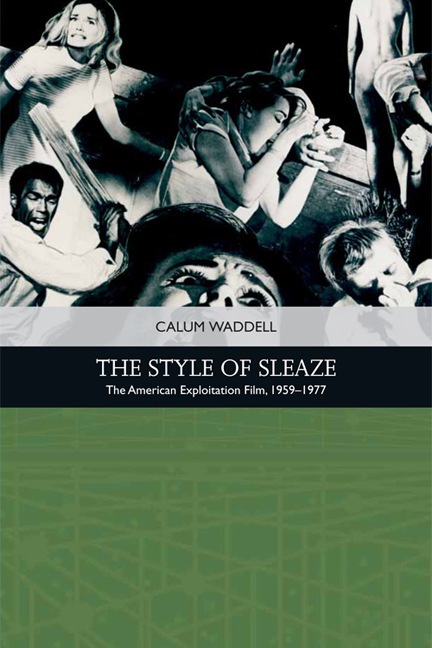Book contents
- Frontmatter
- Contents
- List of Figures
- Acknowledgements
- Introduction
- 1 Not Quite Hollywood
- 2 Emerging from Another Era – Narrative and Style in Modern Exploitation Cinema
- 3 Can We Call It Sexploitation?
- 4 Sex Morality Plays: Character in Adult Cinema
- 5 The Body is Everything: Sexploitation Spectacle
- 6 Exploitation-Horror Cinema
- 7 Cannibalising Tradition: Romero’s Zombies and a Blood Feast
- 8 Slash and Burn: The Exploitation-Horror Film in Transition
- 9 Blaxploitation Cinema: Race and Rebellion
- 10 Sex, Violence and Urban Escape: Blaxploitation Tropes and Tales
- 11 The Blaxploitation Female
- 12 Exploitation as a Movement
- Select Bibliography
- Index
7 - Cannibalising Tradition: Romero’s Zombies and a Blood Feast
Published online by Cambridge University Press: 11 November 2020
- Frontmatter
- Contents
- List of Figures
- Acknowledgements
- Introduction
- 1 Not Quite Hollywood
- 2 Emerging from Another Era – Narrative and Style in Modern Exploitation Cinema
- 3 Can We Call It Sexploitation?
- 4 Sex Morality Plays: Character in Adult Cinema
- 5 The Body is Everything: Sexploitation Spectacle
- 6 Exploitation-Horror Cinema
- 7 Cannibalising Tradition: Romero’s Zombies and a Blood Feast
- 8 Slash and Burn: The Exploitation-Horror Film in Transition
- 9 Blaxploitation Cinema: Race and Rebellion
- 10 Sex, Violence and Urban Escape: Blaxploitation Tropes and Tales
- 11 The Blaxploitation Female
- 12 Exploitation as a Movement
- Select Bibliography
- Index
Summary
Just as Lorna is not is the first sexploitation film, Night of the Living Dead is not the first exploitation-horror film: this distinction belongs to Blood Feast (Herschell Gordon Lewis, 1963). Blood Feast, as with The Immoral Mr. Teas that instigated the sexploitation cycle, if not the sexploitation style, is shot in full colour – as opposed to the grainy 16 mm black and white of Night of the Living Dead – and exhibits the contemporary spectacle of mortality and mutilation that became the most recognisable and marketable aesthetic trait of the exploitation-horror form. Beloved by fans of more left-field horror cinema (one suspects that when Sconce references paracinematic viewers who are tuned into the ineptness of ‘trashy’ low-budget excess he may have Lewis in mind), Blood Feast is an influential but technically amateurish film. For instance, Briggs comments that Blood Feast is almost entirely comprised of spectacle: ‘the first movie in which people died with their eyes open, the first movie to show limbs hacked off on camera, the first movie to show brains and intestines and gaping wounds’. Today, at least one academic has claimed Blood Feast as the film to inform ‘the narrative themes and visual motifs’ of so-called ‘torture porn’ movies such as Hostel (Eli Roth, 2005).
As with The Immoral Mr. Teas – which presented loosely connected vignettes of corporeality in its imagery of nude women – Blood Feast permits an anarchic sense of bodily destruction but with minor regard for characterisation, narrative or even technical proficiency. Comments Briggs: ‘a cultural artefact that was celebrated because it was forbidden, antisocial, sleazy, and bizarre’. Miller concurs: ‘the landmark Blood Feast (1963), which has the dubious distinction of being the first splatter film in the history of cinema’. It is this ‘splatter’ – slang term for the reveal of the gore ‘money shot’ – that permits Blood Feast to be influential but, much like the contemporary disregard for Hostel and its ilk, be dismissed as something almost too vile to be treated seriously. Released after the decline of American film censorship, Blood Feast takes the grubby and minimal locations of the sexploitation genre (the first scene of graphic death takes place in a rundown motel bathroom – it could just as easily be the visual cue for a sex sequence) and anticipates recurring moments of mortality.
- Type
- Chapter
- Information
- The Style of SleazeThe American Exploitation Film, 1959–</I>1977, pp. 110 - 123Publisher: Edinburgh University PressPrint publication year: 2018



